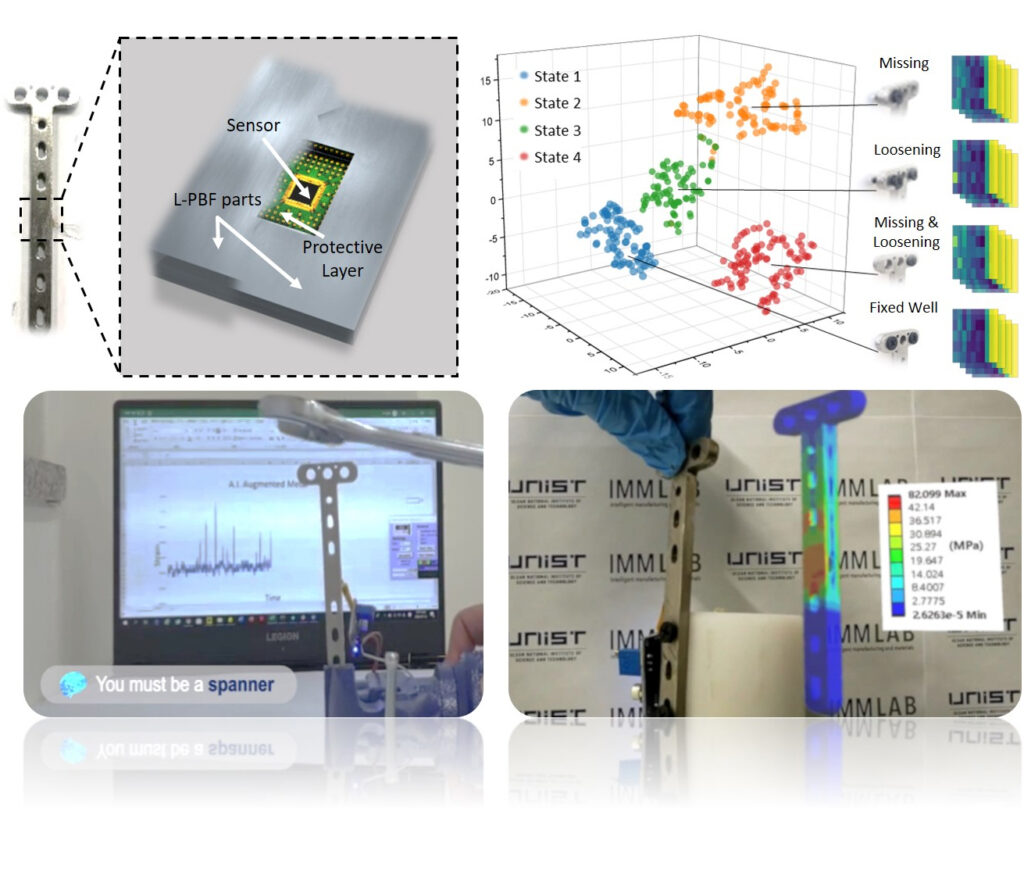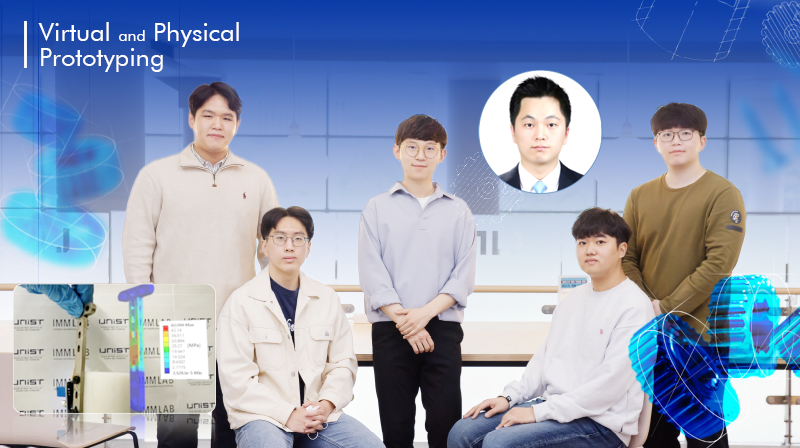Abstract
This paper proposes a novel method to impart intelligence to metal parts using additive manufacturing. A sensor-embedded metal bracket is prototyped via a metal powder bed fusion process to recognise partial screw loosening or total screw missing or identify the source of vibration with the assistance of artificial intelligence (AI). The digital metal bracket can recognise subtle changes in the screw fixation state with 90% accuracy and identify unknown sources of vibration with 84% accuracy. The von Mises stress distribution in the prototyped metal bracket is evaluated using a finite element analysis, which is learned by AI to match the real-time deformation analysis of the metal bracket in augmented reality. The proposed prototype can contribute to hyper-connectivity for developing next-generation metal-based mechanical components.
Smart metal parts, capable of distinguishing the fixation state of screw and identifying the external source of vibration, have been developed.
A research team, led by Professor Im Doo Jung in the Department of Mechanical Engineering at UNIST reported that they succeeded in creating a prototype of sensor-embedded metal bracket using metal additive manufacturing—laser powder bed fusion (LPBF) and artificial intelligence (AI). According to the research team, the newly-developed metal bracket could recognize various abnormal status of fixation, such as partial screw loosening or screw missing, and identify the external force source of vibration with the help of AI. Through experiments, the von Mises stress distribution over the metal bracket was simulated by augmented reality (AR) based on the strain data of the metal bracket.
This study has been carried out in collaboration with researchers from Georgia Institute of Technology in the United States, Nanyang Technological University in Singapore, the Korea Institute of Materials Science, POSTECH, and the Gyeongsang National University.

Figure 1. Overview of the AI augmented digital metal bracket.
“With different types of sensors or metal materials with further developed AI, we expect that this work could pave the way for the next generation of metal-based intelligent mechanical systems, smart factories, autonomous vehicles, or robots,” said Professor Im, corresponding author of the study.
The findings of this research have been published in the Virtual and Physical Prototyping (IF 8.09, world JCR ranking top 7%) on May 5, 2022. It has been supported by the National Research Foundation of Korea (NRF) grant, funded by the Korea government (MSIT).
Journal Reference
Eunhyeok Seo, Hyokyung Sung, Hongryoung Jeon, et al., Laser powder bed fusion for AI assisted digital metal components, Virtual and Physical Prototyping, (2022). DOI: 10.1080/17452759.2022.2068804












